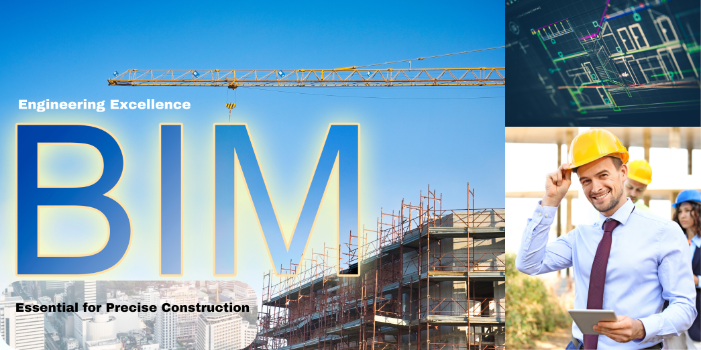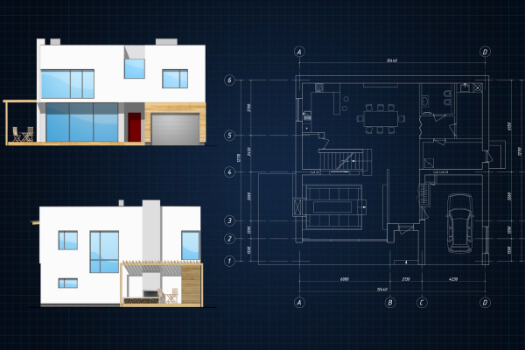
Engineering Excellence: Why BIM is Essential for Precise Construction
Introduction: The Evolution of Construction Engineering
Construction has always been a field full of challenges. Precision and efficiency are often difficult to achieve with traditional methods. Miscommunication, design errors, and unexpected issues on-site can lead to delays and higher costs.
This is where Building Information Modeling (BIM) changes everything. BIM is transforming how construction projects are planned and executed. It offers a digital approach that enhances accuracy and streamlines collaboration. By creating detailed models, BIM reduces errors and helps teams work together better.
As construction becomes more complex, the need for tools like BIM grows. It’s no longer just an option—it’s essential for achieving excellence in modern construction practices. BIM is leading the way to a more precise and efficient future.
Understanding BIM: A Catalyst for Precision
Building Information Modeling (BIM) is a game-changer in construction. It’s a digital process that represents both the physical and functional aspects of a building. Instead of relying on separate drawings or spreadsheets, BIM brings everything together in one model.

This cohesive approach makes construction more precise. With BIM, teams can see how different systems—like plumbing, electrical, and structural components—fit together. The model helps identify conflicts before they happen, saving time and reducing costly mistakes.
BIM also enhances planning and execution. It provides detailed insights that allow for better scheduling, resource allocation, and cost estimation. Whether it’s designing a skyscraper or a single-family home, BIM ensures every detail is considered. It’s not just a tool—it’s the foundation of precise, efficient construction.
Enhancing Collaboration and Communication
BIM revolutionizes how teams communicate during construction projects. It provides a shared platform where everyone—architects, engineers, contractors, and clients—can access real-time information. Instead of juggling separate plans and updates, teams work from a single, unified model.

This level of collaboration reduces errors and misunderstandings. For example, if a design change is made, it’s instantly visible to everyone involved. This transparency ensures no one is left guessing or working with outdated information.
BIM also helps align teams with the project’s goals. By offering a clear view of the design, timeline, and resources, it fosters a sense of unity and purpose. When everyone works together seamlessly, projects run smoother, faster, and with fewer mistakes. BIM turns collaboration into a strength, not a challenge.
Streamlining Design and Planning Processes
BIM is a powerful tool for design and planning in construction. It creates detailed 3D models that allow teams to visualize projects before construction begins. These models provide a clear picture of how the finished structure will look and function, helping to ensure precision from the start.
One of BIM’s key advantages is its ability to detect design conflicts early. For instance, it can identify when a plumbing line might intersect with electrical wiring. By resolving these issues in the virtual model, teams avoid costly delays and rework on-site.

BIM also simplifies scheduling and resource allocation. It provides accurate timelines, showing when specific tasks need to happen and how they depend on one another. This ensures that resources, such as materials and labor, are used efficiently.
With BIM, teams can plan better and execute projects with fewer surprises. The detailed insights help streamline every step, from the initial design to the final build. By addressing challenges early and improving coordination, BIM transforms the planning process into a smooth and precise operation, saving time, money, and effort along the way.
Reducing Errors and Rework
BIM significantly reduces errors in construction projects. One of its standout features is clash detection, which identifies conflicts in the design before construction starts. For example, BIM can flag issues like overlapping HVAC ducts and structural beams, allowing teams to resolve them early.

This proactive approach minimizes costly rework. Studies have shown that projects using BIM experience up to a 40% reduction in errors compared to traditional methods. By addressing potential issues in the virtual model, teams save both time and resources.
Fewer errors mean smoother workflows and lower costs. With less rework, projects stay on schedule, avoiding delays that can quickly add up. BIM ensures that construction is precise from the start, making it an essential tool for efficient, cost-effective building. It’s not just about saving money—it’s about building smarter.
Improving Cost Management and Resource Allocation
BIM is a game-changer for managing costs and resources in construction. Its ability to provide accurate quantity take-offs ensures teams know exactly how much material is needed for a project. This level of detail allows for precise cost estimations, reducing the risk of budget overruns.

With BIM, budgeting becomes more efficient. Teams can rely on data-driven insights to allocate funds where they’re most needed. For example, precise measurements mean fewer material orders, which prevents wastage and unnecessary expenses.
BIM also supports just-in-time material delivery. By aligning deliveries with the project timeline, materials arrive only when they’re needed, reducing storage costs and keeping the site organized.
This level of control helps projects stay on track financially and operationally. BIM ensures every dollar and resource is used wisely, making it an essential tool for cost-effective and efficient construction management.
Enhancing Sustainability and Compliance
BIM plays a vital role in creating sustainable and compliant construction projects. It supports energy-efficient designs by allowing teams to analyze and optimize building performance before construction begins. For example, BIM can simulate energy usage to ensure the design minimizes waste and maximizes efficiency.
Material selection also benefits from BIM’s insights. Teams can choose eco-friendly options, reducing the environmental impact of the project. By planning smarter, BIM ensures sustainability is built into every stage of construction.

BIM is equally important for meeting regulatory standards. It helps ensure that designs comply with building codes and safety regulations, reducing the risk of costly revisions later. Projects that use BIM are often able to achieve certifications like LEED or BREEAM, demonstrating their commitment to sustainability.
Through smarter designs and better compliance, BIM makes it easier to deliver projects that are both environmentally friendly and aligned with industry standards.
Future Trends: BIM and the Advancement of Construction Precision
BIM is evolving alongside emerging technologies like AI and IoT, creating smarter and more connected construction processes. AI enhances BIM by predicting potential issues, while IoT provides real-time data from the job site, improving decision-making.
In the future, BIM will continue to drive precision and efficiency. Automated workflows, advanced simulations, and predictive analytics will become standard, reducing errors even further.
Industry professionals should embrace these advancements to stay competitive. By adopting BIM and adapting to its growing capabilities, they can ensure their projects remain precise, efficient, and ready for the future of construction.
Conclusion: Embracing BIM for Engineering Excellence
BIM has proven its value across every stage of construction. From design and planning to execution, it enhances precision, reduces errors, and streamlines collaboration. Its ability to optimize resources, ensure compliance, and support sustainability makes it an indispensable tool for modern construction.
Industry professionals must embrace BIM to stay competitive and deliver high-quality projects. Integrating BIM into workflows is no longer optional—it’s essential for success.
As construction continues to evolve, BIM will remain at the forefront, driving efficiency and innovation. By adopting BIM, we build not just structures, but a stronger, smarter future.